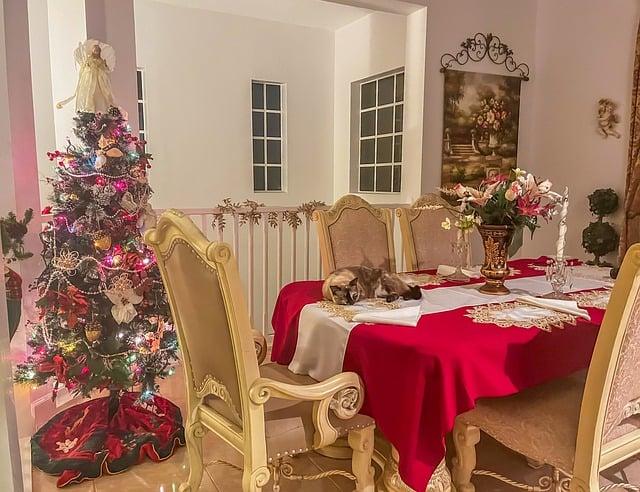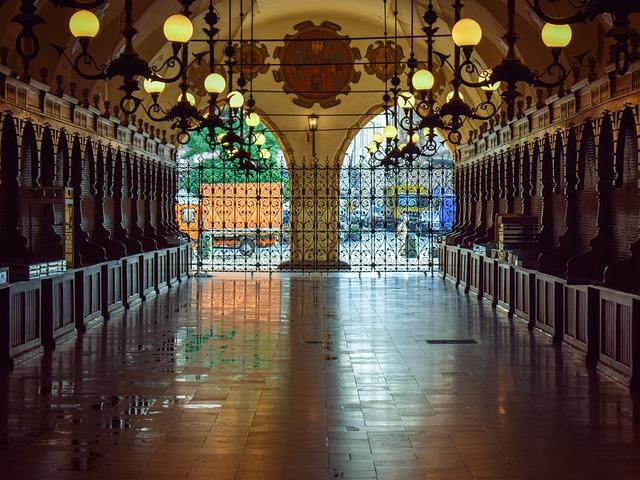In the heart of medieval Germany, as winter cloaked the towns in a frosty embrace, a tradition began to take root. It was the year 1434 when the citizens of Dresden gathered in the town square, their breath visible in the crisp air, to celebrate the season with a market. Stalls adorned with twinkling lights offered warm spiced wine and handcrafted gifts, inviting all to share in the joy of community. This humble gathering blossomed into the Christmas markets we cherish today, where the spirit of togetherness and festive cheer continues to thrive.
Table of Contents
- The Origins of Christmas Markets and Their Historical Significance
- Evolution of Christmas Markets Through the Centuries
- Cultural Variations: How Different Countries Celebrate with Markets
- Tips for Visiting Christmas Markets: What to Expect and How to Enjoy
- Q&A

The Origins of Christmas Markets and Their Historical Significance
The tradition of festive markets during the Christmas season can be traced back to the late Middle Ages in Europe, particularly in Germany and Austria. The first documented Christmas market, known as the “December Market,” took place in Dresden in 1434. These early markets were not just about holiday cheer; they served as vital community gatherings where locals could purchase essential goods as winter approached. Over time, they evolved into vibrant celebrations filled with **handcrafted goods**, **seasonal foods**, and **warm beverages**, creating a sense of togetherness and joy during the cold months.
As the concept spread across Europe, each region infused its unique cultural elements into the markets. In France, for instance, the markets became known for their **artisanal crafts** and **gourmet treats**, while in the UK, they often featured **traditional carols** and **festive entertainment**. The historical significance of these markets lies not only in their role as commercial hubs but also as a means of fostering community spirit and preserving local traditions. Today, they continue to attract millions of visitors, serving as a reminder of the rich tapestry of customs that define the holiday season.

Evolution of Christmas Markets Through the Centuries
The origins of Christmas markets can be traced back to the late Middle Ages, particularly in German-speaking regions of Europe. These festive gatherings, known as “Christkindlmarkt”, began as a way for townsfolk to prepare for the winter season and celebrate the upcoming Christmas festivities. Initially, they were held in December, allowing communities to come together to purchase essential goods, warm beverages, and seasonal treats. Over time, these markets evolved into vibrant celebrations filled with handcrafted gifts, decorations, and culinary delights, reflecting the local culture and traditions.
As centuries passed, the concept of Christmas markets spread beyond Germany, influencing various European countries and adapting to local customs. In the 19th century, the markets began to incorporate more elaborate decorations and entertainment, transforming them into enchanting winter wonderlands. Today, visitors can find a plethora of offerings at these markets, including:
- Artisan crafts that showcase local talent
- Traditional foods like roasted chestnuts and mulled wine
- Live performances featuring music and dance
- Festive lights that create a magical atmosphere
This evolution has not only preserved the spirit of community and celebration but has also made Christmas markets a beloved tradition for people around the world.

Cultural Variations: How Different Countries Celebrate with Markets
Across the globe, the festive spirit of Christmas markets manifests in diverse and vibrant ways, reflecting the unique cultural heritage of each country. In Germany, the tradition of Weihnachtsmärkte dates back to the late Middle Ages, where towns would gather to celebrate the season with handcrafted goods, mulled wine, and traditional foods. Visitors can expect to find **ornate wooden stalls** adorned with twinkling lights, offering everything from **gingerbread cookies** to **handmade ornaments**. Meanwhile, in Austria, the Christkindlmarkt in Vienna enchants visitors with its stunning backdrop of historic architecture, where the aroma of roasted chestnuts fills the air, and carolers serenade the crowds, creating a magical atmosphere that draws locals and tourists alike.
In contrast, the United States has embraced the Christmas market concept with a modern twist, often blending traditional European elements with local flair. Cities like Chicago and New York host sprawling markets that feature **artisanal crafts**, **gourmet food stalls**, and live entertainment, showcasing the melting pot of cultures that define American society. In Mexico, the festive season is celebrated with vibrant posadas, where markets come alive with **piñatas**, **colorful decorations**, and traditional foods like tamales and ponche. Each country’s celebration is a testament to its cultural identity, offering a unique experience that invites people to come together in the spirit of joy and community during the holiday season.

Tips for Visiting Christmas Markets: What to Expect and How to Enjoy
Visiting Christmas markets is a delightful experience that immerses you in the festive spirit. As you stroll through the twinkling lights and charming stalls, expect to be greeted by the warm aromas of roasted chestnuts, spiced mulled wine, and freshly baked gingerbread. **Dress warmly** to fully enjoy the outdoor atmosphere, as temperatures can drop significantly in the evening. **Bring cash** for purchases, as some vendors may not accept cards. Don’t forget to take your time exploring the unique handcrafted gifts and local delicacies that each market has to offer.
To enhance your visit, consider planning your trip during the week to avoid the larger crowds typically seen on weekends. **Arrive early** to enjoy a quieter experience and capture the beauty of the market before it gets bustling. Engage with local artisans and vendors; many are eager to share the stories behind their crafts. **Try to sample a variety of foods**—from savory treats to sweet confections—to truly savor the flavors of the season. Lastly, keep an eye out for live performances or festive activities, as many markets host entertainment that adds to the joyful ambiance.
Q&A
-
When did Christmas markets first appear?
Christmas markets originated in Germany during the Late Middle Ages, with the first known market taking place in Dresden in 1434.
-
What was the purpose of early Christmas markets?
Initially, these markets served as a way for communities to gather and celebrate the Advent season, offering local goods, crafts, and seasonal foods.
-
How have Christmas markets evolved over time?
Over the centuries, Christmas markets have expanded beyond their local roots, incorporating diverse cultural elements and attracting visitors from around the world.
-
Are Christmas markets only found in Germany?
No, while Germany is known for its traditional markets, similar festive markets can now be found in many countries across Europe and beyond, each with its unique flair.
As we stroll through the twinkling lights and festive aromas of today’s Christmas markets, we can appreciate their rich history. From humble beginnings in medieval Europe to the vibrant celebrations we know now, these markets continue to spread joy and warmth each holiday season.

大家好,我是彼得潘,專業的手法身體治療師。我喜歡探索和研究各種主題,並透過與人工智慧的合作分享專業、實用、有趣的文章。我們定期進行人工審核,以確保內容的準確性。如果您發現文章中有任何不準確的地方,請隨時與我們聯繫,我們會及時糾正。您可以透過 [email protected] 與我們聯繫。



